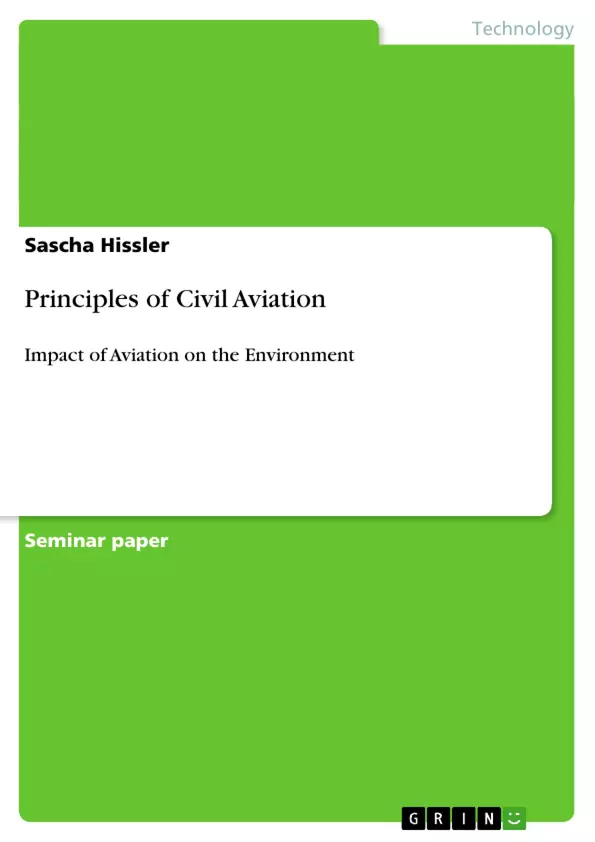This paper tries to concentrate on the main influences of aviation on the environment such as noise pollution and its effects on humans as well as the growing impact of aviation on the atmosphere and on climate change itself.
Aviation has a number of environmental impacts that are experienced by local
residents in the vicinity of airports and under flight paths. Noise has been the focus of concern over all the years of growth in aviation and more recently air pollution and the health effects of air pollution from aircraft have begun to cause concern. The following chapter will inform about these issues:
Glossary
Introduction
Noise pollution
Effects of noise on humans
Influence on the atmosphere
Impact of aviation on climate change
Sources
Inhaltsverzeichnis (Table of Contents)
- Glossary
- Introduction
- Noise pollution
- Effects of noise on humans
- Influence on the atmosphere
- Impact of aviation on climate change
- Sources
Zielsetzung und Themenschwerpunkte (Objectives and Key Themes)
This paper focuses on the significant impacts of aviation on the environment. It aims to explore the various environmental concerns associated with the industry, particularly noise pollution and its effects on humans, as well as the growing impact of aviation on the atmosphere and climate change.- The increasing importance of air transportation in a globalized world
- The environmental challenges posed by aviation, specifically noise pollution and climate change
- The effects of noise pollution on human health and quality of life
- The impact of aviation emissions on the atmosphere and the role of the industry in climate change
- The need for sustainable solutions to mitigate the environmental footprint of aviation
Zusammenfassung der Kapitel (Chapter Summaries)
Introduction
This chapter introduces the growing importance of aviation in both the social and economic landscape. It highlights the significance of air travel in connecting people and facilitating global trade, while also emphasizing the growing awareness of the industry's environmental responsibilities.Noise pollution
This chapter examines the issue of aircraft noise and its impact on communities living near airports. It discusses the detrimental effects of noise on human health, quality of life, wildlife, and the learning capabilities of schoolchildren. The chapter also explores the challenges in accurately assessing the extent of noise annoyance and outlines various noise measurement scales and their relevance in environmental health regulations.Influence on the atmosphere
This chapter delves into the impact of aviation on the atmosphere. It discusses the environmental consequences of aviation emissions, including their contribution to climate change. The chapter examines the various factors influencing atmospheric pollution from aircraft, such as engine technology, fuel consumption, and flight altitude. It also explores potential mitigation strategies to minimize the impact of aviation on the atmosphere.Impact of aviation on climate change
This chapter focuses on the role of aviation in global climate change. It examines the contribution of aviation emissions to greenhouse gases and their impact on the Earth's climate system. The chapter discusses various research findings and models used to estimate the contribution of aviation to climate change and explores potential solutions to reduce the industry's carbon footprint.Schlüsselwörter (Keywords)
This paper focuses on the environmental impacts of aviation, specifically noise pollution, its effects on human health, and the impact of aviation on climate change. Key concepts include aircraft noise measurement, decibel scales, air traffic noise management, aviation emissions, climate change, and sustainable aviation practices.- Quote paper
- Diplom-Staatswissenschaftler (univ.) Sascha Hissler (Author), 2009, Principles of Civil Aviation, Munich, GRIN Verlag, https://www.grin.com/document/132893



